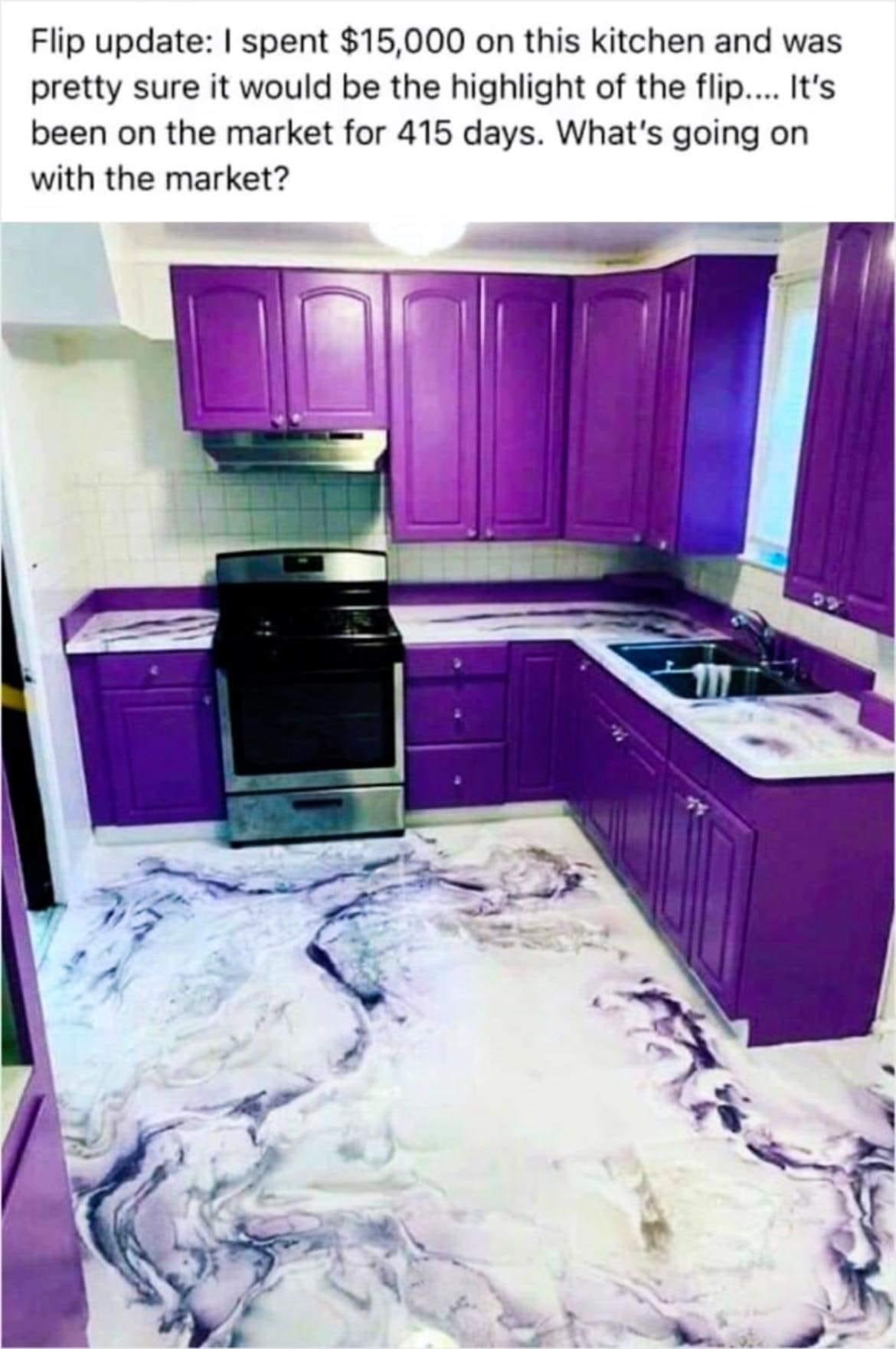this post was submitted on 16 Feb 2024
773 points (98.0% liked)
Memes
51475 readers
352 users here now
Rules:
- Be civil and nice.
- Try not to excessively repost, as a rule of thumb, wait at least 2 months to do it if you have to.
founded 6 years ago
MODERATORS
you are viewing a single comment's thread
view the rest of the comments
view the rest of the comments

What I'm saying is that it's a tradeoff. The fuller the send, the harder it is to find a buyer, but the more they'll pay.
Conversely, the emptier(???) the send, the more buyers will be interested, but the less you can charge.
I think going tackier would let them charge more if they found a buyer, but it would make it even less likely to find a buyer. This is already a full enough send the they're struggling to find anyone interested, send it any harder and there would be no chance.
Yes, but that sorta implies that it's a linear relationship, which it likely isn't.
I'm thinking it's probably more like the uncanny valley, with a trough in the middle where your send is neither full enough nor standard enough to find ANY buyers at all. Then again, there were quite a few commenters here who said they love it so perhaps I'm wrong about that.
We're both just speculating here. I'd be interested if anyone has done any studies on this, I doubt it. Not really something useful for society.
I was basing my speculation off of the very little I've learned about the sale of art (paintings, etc) where art with a broad appeal doesn't go for much, but niche art will sell for much more if you can find a buyer. But I'm sure there are depths to that of which I'm completely unaware, and I'm sure it can't just be applied to home renos just like that. I just get a gut feeling that there are some parallels.
Well, yes. The Wikipedia article I linked does indeed say that this is a hypothesis, which means it hasn't been conclusively proven yet. But it does also list a number of reasons that lead to this hypothesis being proposed, and there's a long-ish paragraph on the research that has been done on it. But yes, as long as it's a hypothesis, it's still in the realm of speculation.
It seems however that your experience does somewhat back that up, judging by the "if you can find a buyer". Basically, what I'm saying is, that if depends on or determines whether an artwork falls into the uncanny valley. If you can find one, it was on the other side of it. If you can't, then it was in it.
Basically, picture the graph from that article, but instead of "human likeness", we label the x-axis "artistic appeal", and the y-axis "amount sold for". Get rid of the dotted line, and on the solid line we replace "stuffed animal" with "broad appeal" and "corpse" with "niche appeal that doesn't sell", and the far end of it we label "niche appeal that DOES sell" and place it much higher up, to where "healthy person" is. Hope that makes sense.
I'm pretty familiar with the uncanny valley, and I don't really think it applies to kitchens beyond as a metaphor. But then again, you could say the same about my relating it to the fine art market (and I cannot stress enough how little my expertise is in this regard lol).
Nothing with people IRL is ever a linear relationship so I imagine the truth is somewhere in-between lol
Like I said, it was just a speculation I had, because for me, this kitchen definitely falls into uncanny valley territory. A little more ooomph and it might have paid off, or a little less and it might have sold reasonably. But again, there were many commenters here who actually said they DID love it, so perhaps I'm wrong. But that's assuming they actually have enough money to actually buy it, which at least some of them admitted they don't.